A Tibetan Meal in a Bowl
By Alexandra Torrealba
Thubten Amchok, 47, lives with his wife Kalsang, 37, his daughter Jaza, 12, and his ten-year-old son Jasea in Woodside, Queens. Tonight, his mother-in-law Chime and his father-in-law Sonam, who came from Nepal a couple of months ago and are staying with the family temporarily, join the Amchoks for dinner: an over-sized pot of boiling thenthuk soup, a beef and vegetable broth with mushrooms, spinach and homemade noodles.
“We love this dish because it is convenient, healthy, cheap, and easy to make,” said Thubten. “And when made in big batches, it lasts a couple of days, for various meals, and people can have second servings. In the cold months it’s the perfect food because it’s filling and warm, and some people even say it helps you sleep well.”
On a short trip to the local butcher shop on his way home that evening, Thubten spends $12 on two pounds of lean, boneless chuck meat, of which he will use half for tonight’s meal. “The people of Tibet are nomadic,” he said, “which directly affects the way we eat. Our diet is about 80 percent meat.” The rest of the soup’s ingredients – mushrooms, spinach, tomatoes, onions, ginger, garlic and potatoes – are waiting at home.
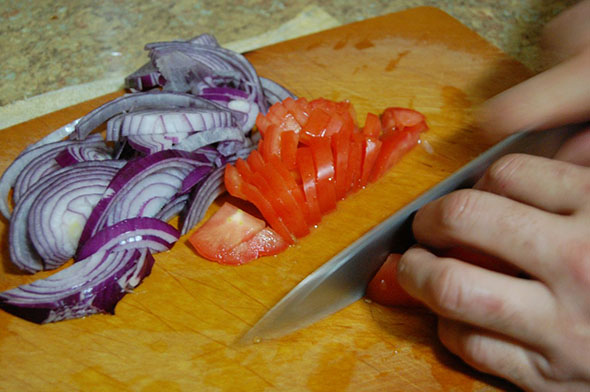
Thubten chops 1 cup of red onion and 1 medium plum tomato, the first
ingredients to go into the soup. Photo: Alexandra Torrealba.
Tea is a staple at the Amchok household. The family drinks a cup each as they assemble in the living room during the preparation of the evening meal. Tonight, Thubten brewed a concoction of water, Indian spice tea and a generous amount of half-and-half.
Thubten’s love of food began when he was four years old, when he spent days observing his older sister as she prepared meals in their Tibet home. “Now, I am very picky about what others cook for me,” he said. “That’s why I always want to be in the kitchen, because I like things cooked my style.”
As a daytime job, Thubten now runs a successful Tibetan food truck in Queens that is famous for its momos, or beef dumplings, a typical street dish in his hometown. But the Amchoks seldom place momos on their dinner table. “We used to eat them all the time because of my business,” Thubten said, “but now, my family is pretty much sick of them!”
In his home kitchen, he prefers to measure the dry ingredients using his instincts instead of a measuring cup. But in his business, measurements are essential. “With no measurements, there is no way to control the quality of the dish,” he said.

Allowing the dough to set for at least 15 minutes will ensure an optimal stretch.
Photo: Alexandra Torrealba.
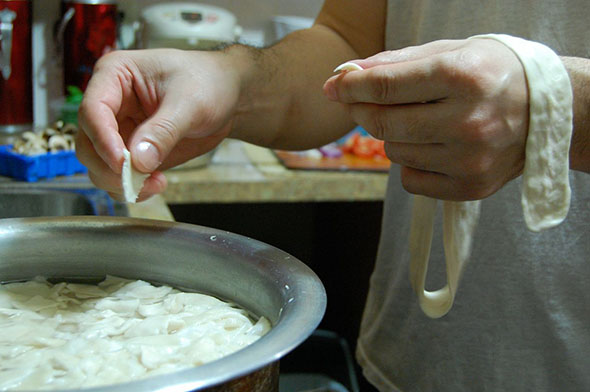
After flattening the stretched dough with his thumbs, Thubten pinches off small
pieces and tosses them into boiling water. Photo: Alexandra Torrealba.
He moves swiftly around the kitchen of his small suburban home, chopping vegetables with precision and pulling out ingredients from pantry shelves. As he patiently kneads the homemade noodle dough and tosses the chopped vegetables into boiling water, he talks about his childhood.
“I had the hardest of lives,” said Thubten, a Tibetan refugee. As a child, he ran away from his homeland in the midst of the political conflict with China, which heightened in the 1950s. His family strongly opposed the Chinese occupation of Tibet and suffered persecution for many years. At 14, he began working as a Buddhist monk distributing literature about the Dalai Lama and advocating for Tibetan independence, until the Chinese government imprisoned and tortured him for three years and four months. In November 1995, after escaping to India, he was finally able to emigrate to New York City. With the help of Human Rights First, he was one of the first Tibetan immigrants to be granted asylum in 1997.
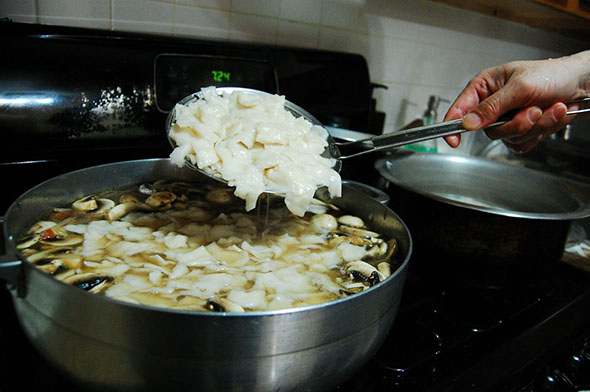
The noodles are cooked separately to prevent them from getting soggy. Once
cooked, Thubten adds them to the soup. Photo: Alexandra Torrealba.
The smell of fried garlic and beef broth fills the kitchen air. Thubten pours a small amount of broth into a bowl for tasting. “In my opinion, it needs more vinegar,” he said, “but my family doesn’t like the acidic taste too much.” So he adds some more salt.
After almost an hour of preparation and cooking, the thenthuk soup is ready. The family sits down at the dinner table at about 8 p.m. Thubten serves the soup in eight small porcelain bowls and places eight sets of chopsticks on the table, which will be used to eat the pieces of beef, vegetables and noodles. The broth is usually sipped directly from the bowl. Almost every family member has second helpings, and there are no post-dinner sweets. “Tibetans do not usually eat dessert,” he said. “We try to avoid sugar as much as possible in our diet.”
The leftovers sit in the refrigerator. Thenthuk soup, Thubten says, tastes even better for breakfast.
See the Amchok family’s recipe here.
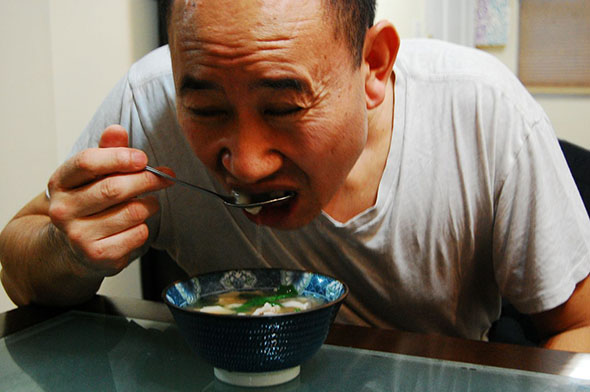
“This soup is extremely hot!” Thubten warns his children, as he takes the first
spoonful. Photo: Alexandra Torrealba.

After dinner, the Amchok family sits in the living room. From left: Zewang Rongso, a family friend who joins for
dinner, Thubten, Jasea, Sonam, Chime, Kalsang and Jaza. Photo: Alexandra
Torrealba.
Tags: dinner, NYSD2D, Queens, soup, thenthuk, Tibet, Woodside

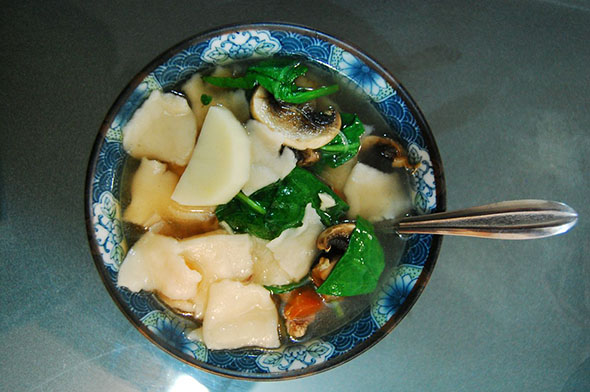

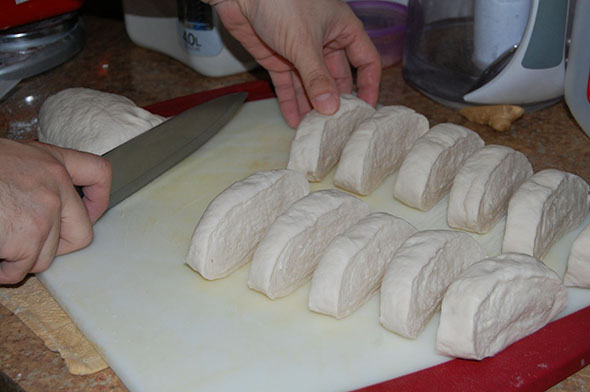
Your Comments